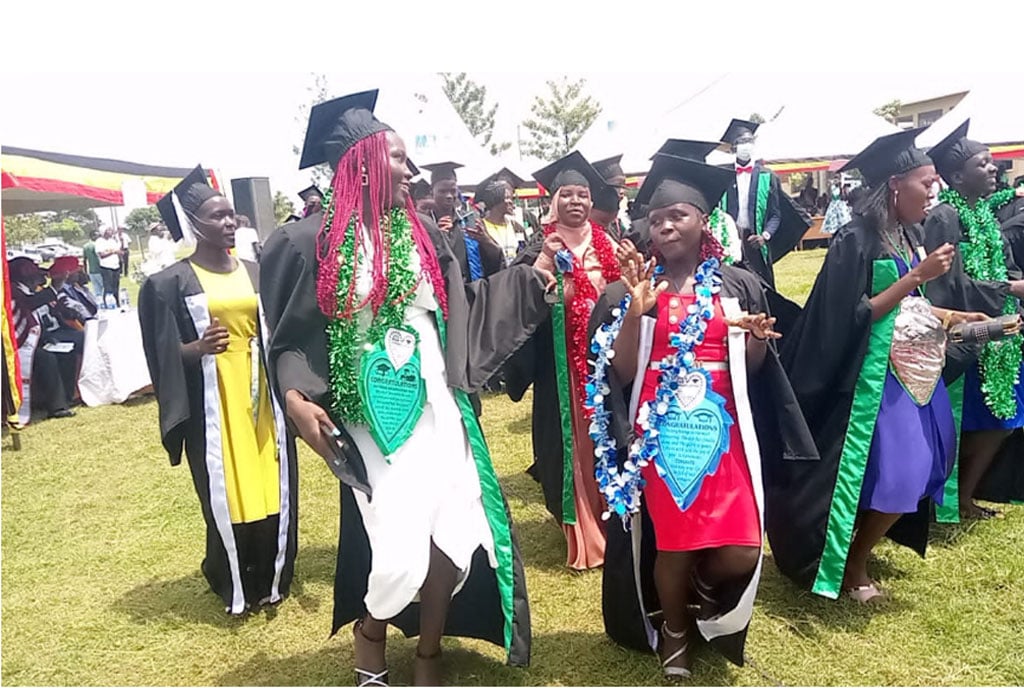Prime
Kabarole decries low safe water access

A man draws water from a well in Nyabubale Village, Kiko Town Council in Kabarole District in July 2017. PHOTO/ALEX ASHABA
What you need to know:
- The percentage of rural villages with safe water supply increased from 66 per cent in the 2018/19 financial year to 68 per cent in 2020. The functionality for rural water supplies is at 85 per cent.
- However, several villages in Kabarole still lack safe water for domestic use, with some residents fetching water from streams.
- Leaders say their efforts to extend piped water to rural areas are hampered by limited resources.
Authorities in Kabarole District are struggling to improve sanitation and access to safe water, especially in rural areas where access to safe water is at 68 per cent.
The district water officer, Mr Bruno Basudde, says residents in the communities such as Kasenda and Harugogoo sub-counties, and Kijura Town Council are facing water shortage.
He says their efforts to increase access to safe water are hampered by resources.
“This financial year, we have a budget of Shs815 million which is not enough, and our major role is to coordinate to see that we improve on water access,” he explains.
Mr Richard Rwabuhinga, the district chairperson, says majority of community water points are non-functional.
He explains that they are working to ensure that the water points are repaired and water extended to other places.
Plan
“What we want to do now is to ensure that all partners in the water sector put all the resources together to see that we solve the problem of water. The investment in the water sector is high but access to safe water is still low,” Mr Rwabuhinga says.
In 2018, the district launched the Water, Sanitation and Hygiene (WASH) Master Plan with the aim of improving access to safe water, sanitation and hygiene for all by 2030.
The UN Sustainable Development Goal Number 6 seeks to ensure availability and sustainable management of water and sanitation for all.
However, several villages in Kabarole still lack safe water for domestic use, with some residents fetching water from streams.
Last year, the National Water and Sewerage Corporation extended piped water to some parts of Kijura Town Council and Kabende Sub-county.
The district water officer says in the current financial year, they plan to extend water to the Harungogo Sub-county by constructing Busaiga water supply system at Shs364 million and Isunga water supply system at Shs200m.
The district also plans to extend water to Nyamigongo, Nyabwina, Kyinyakende and also rehabilitate 10 shallow wells.
The district has also put in place a Wash taskforce with the aim of advocating for improved water access and sanitation.
Current status
According to the WASH team taskforce report for 2019, 12.9 per cent of people in Kabarole access piped water while 512 shallow wells built by the district are non-functional.
Mr Martin Watsisi, the coordinator for the International Water and Sanitation Centre and a member of the WASH taskforce, says 63 per cent of shallow water wells in the district are contaminated.
“The challenge in Kabarole is the poor technology used in the construction of water supply systems, most especially shallow wells. Of the 1,400 water points in the district, 512 shallow wells and 250 protected springs are susceptible to contamination and drying up during dry season,” Mr Watsisi says.
He says in the WASH master plan, they have planned to spend $24.1 million on extending safe water to communities and $ 48.1 million on improving sanitation by 2030.
The WASH taskforce has also drafted a sanitation and hygiene ordinance that is aimed at enforcing the implementation of water and sanitation issues in the district.
Kabarole District in partnership with Natural Resource Defence Initiative (NRDI) also plans to construct 12 household flower toilets and construct washrooms in schools to improve sanitation in this financial year.
Ms Anent Asasira, a resident of Kasenda Sub-county, says piped water is only accessed by a few and the rest fetch water from crater lakes, which exposes them to water borne diseases.
Statistics
According to the Atlas of the Ministry of Water and Environment, access to safe water in Harugogo Sub-county is 50 per cent, Kijura Town Council 7 per cent and Karangura at 38 per cent.
Distribution
The data also shows that 27 per cent of people fetch water from protected springs, 58 per cent from shallow wells, 4 per cent from boreholes, and 12 per cent from public taps.
The Water and Environment Sector Performance report 2020 indicates that by June 2020, national safe water coverage in rural areas was estimated at 68 per cent, declining from 69 percent in 2019.
The percentage of rural villages with safe water supply increased from 66 per cent in the 2018/19 financial year to 68 per cent in 2020. The functionality for rural water supplies is at 85 per cent.




